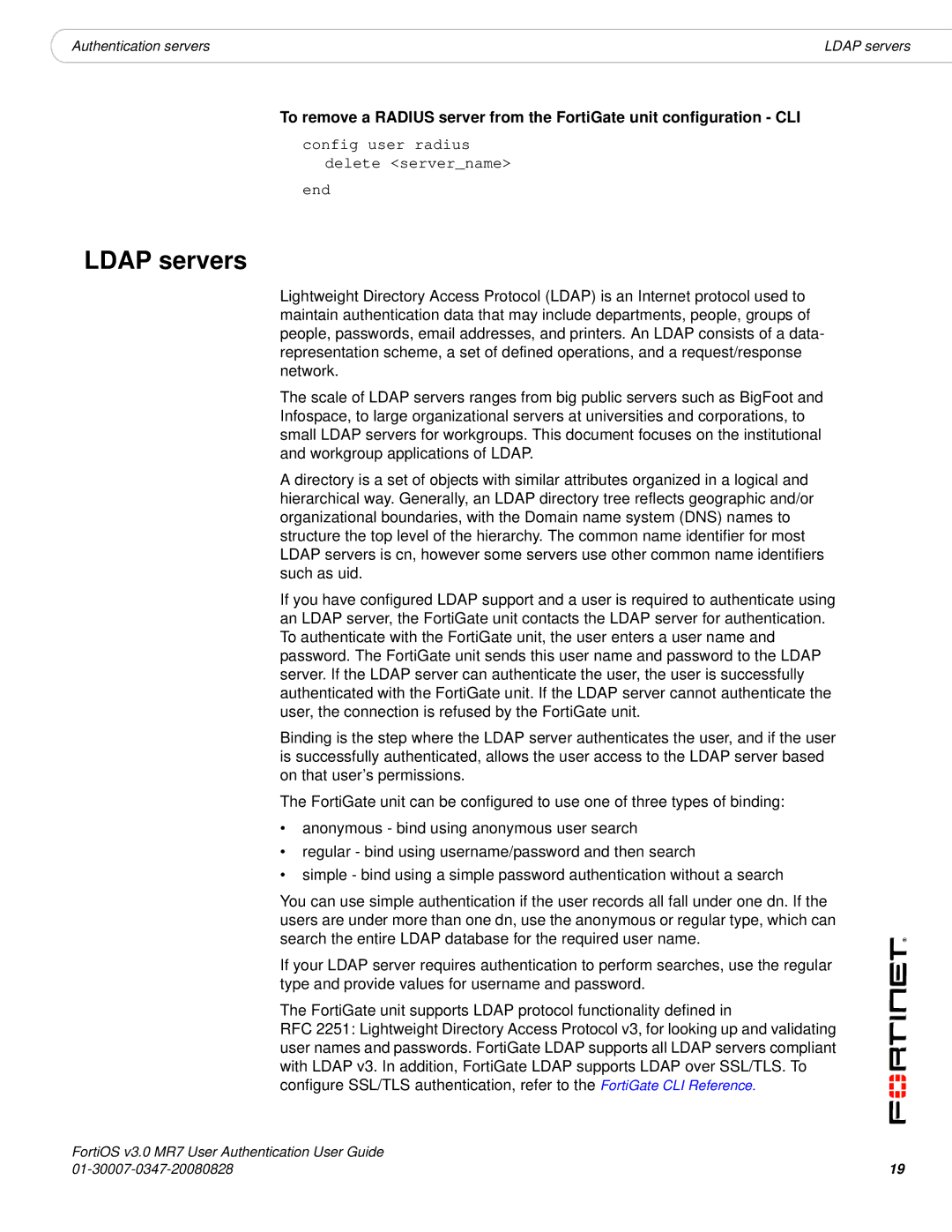
|
|
|
Authentication servers | LDAP servers |
To remove a RADIUS server from the FortiGate unit configuration - CLI
config user radius delete <server_name>
end
LDAP servers
Lightweight Directory Access Protocol (LDAP) is an Internet protocol used to maintain authentication data that may include departments, people, groups of people, passwords, email addresses, and printers. An LDAP consists of a data- representation scheme, a set of defined operations, and a request/response network.
The scale of LDAP servers ranges from big public servers such as BigFoot and Infospace, to large organizational servers at universities and corporations, to small LDAP servers for workgroups. This document focuses on the institutional and workgroup applications of LDAP.
A directory is a set of objects with similar attributes organized in a logical and hierarchical way. Generally, an LDAP directory tree reflects geographic and/or organizational boundaries, with the Domain name system (DNS) names to structure the top level of the hierarchy. The common name identifier for most LDAP servers is cn, however some servers use other common name identifiers such as uid.
If you have configured LDAP support and a user is required to authenticate using an LDAP server, the FortiGate unit contacts the LDAP server for authentication. To authenticate with the FortiGate unit, the user enters a user name and password. The FortiGate unit sends this user name and password to the LDAP server. If the LDAP server can authenticate the user, the user is successfully authenticated with the FortiGate unit. If the LDAP server cannot authenticate the user, the connection is refused by the FortiGate unit.
Binding is the step where the LDAP server authenticates the user, and if the user is successfully authenticated, allows the user access to the LDAP server based on that user’s permissions.
The FortiGate unit can be configured to use one of three types of binding:
•anonymous - bind using anonymous user search
•regular - bind using username/password and then search
•simple - bind using a simple password authentication without a search
You can use simple authentication if the user records all fall under one dn. If the users are under more than one dn, use the anonymous or regular type, which can search the entire LDAP database for the required user name.
If your LDAP server requires authentication to perform searches, use the regular type and provide values for username and password.
The FortiGate unit supports LDAP protocol functionality defined in
RFC 2251: Lightweight Directory Access Protocol v3, for looking up and validating user names and passwords. FortiGate LDAP supports all LDAP servers compliant with LDAP v3. In addition, FortiGate LDAP supports LDAP over SSL/TLS. To configure SSL/TLS authentication, refer to the FortiGate CLI Reference.
FortiOS v3.0 MR7 User Authentication User Guide |
|
19 |
